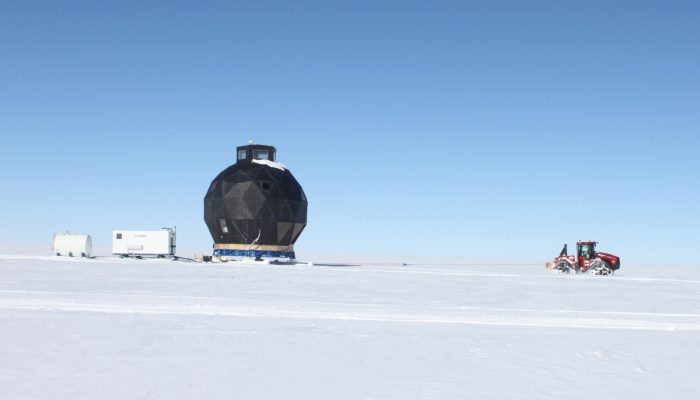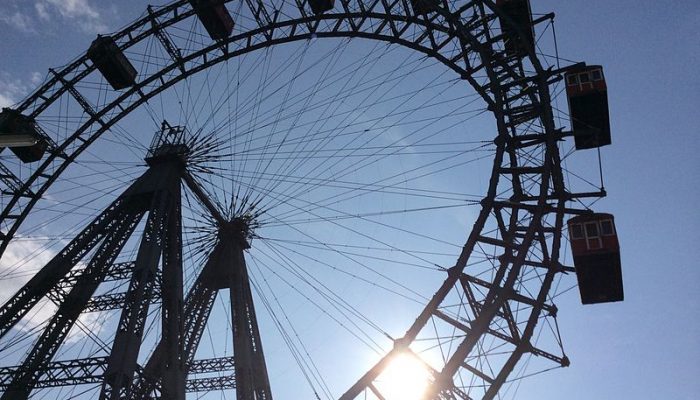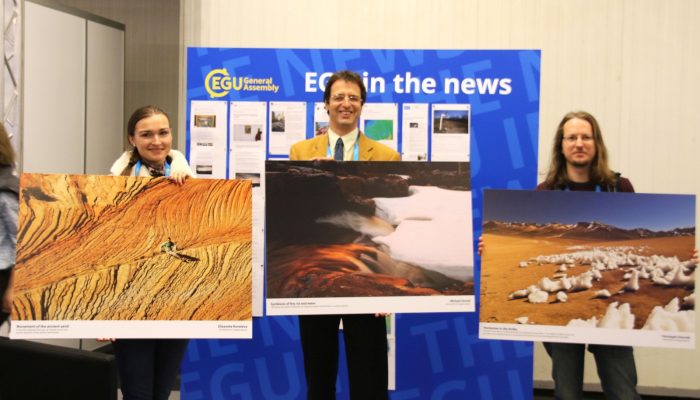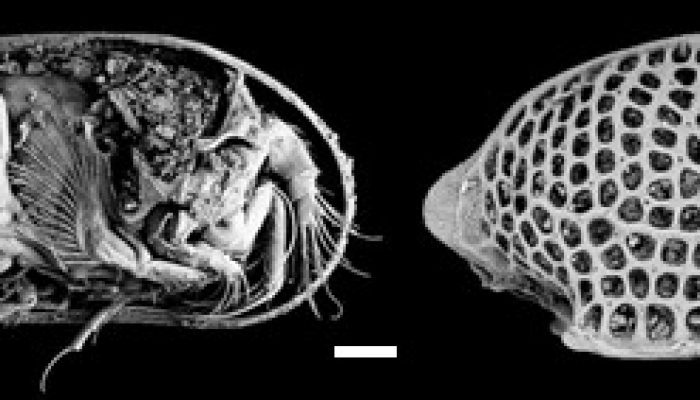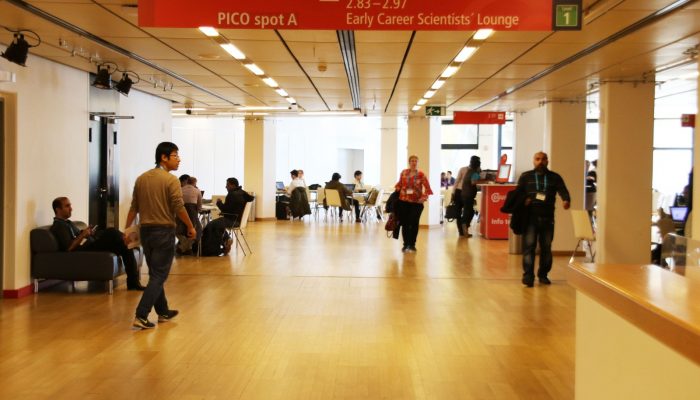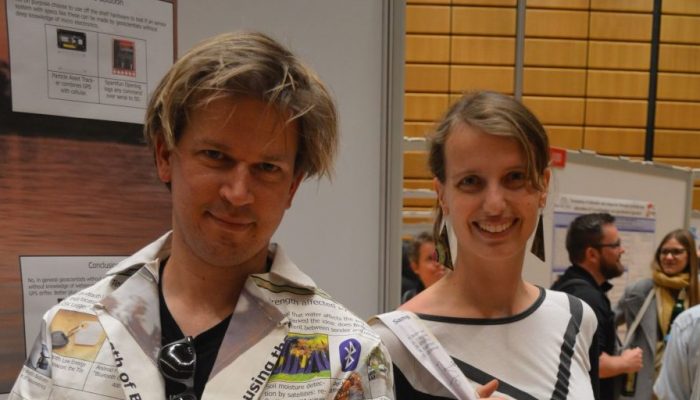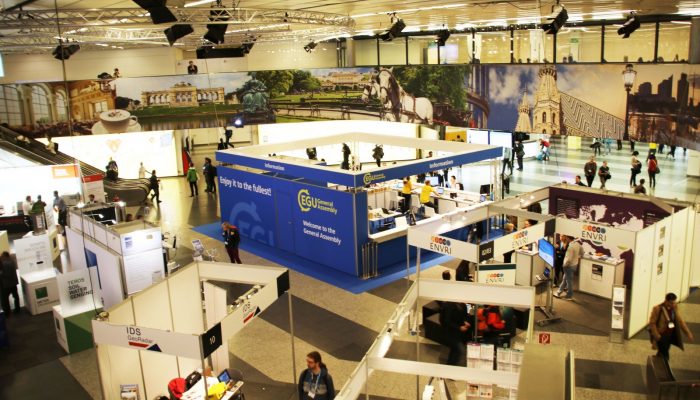Post by Anne van Loon, University of Birmingham You might remember that the summer of 2015 was extremely dry in large parts of Europe (Figure 1), leading to crop losses, wildfires, drinking water supply deficiencies, and reductions in energy production and navigation (Van Lanen et al., 2016), whether you experienced it yourself or read about it in the newspapers. Based on incomplete information th ...[Read More]
GeoLog
Imaggeo on Mondays: An epic ‘house’ move across the ice
In 2008 the NEEM Deep Ice Core Project was initiated by 14 partner countries in Northwestern Greenland (camp position 77.45°N 51.06°W) with the aim to drill from the very top of the Greenland ice cap to its base; obtaining ice from as far back as the last interglacial period- the Eemian – some 130,000 years old. At the start of the 2008 field season, the NEEM camp consisted of a single hea ...[Read More]
GeoLog
In Vienna for the weekend? Here’s a taste of what’s on offer…
The General Assembly has come to an end, with only a few days left to go. Many of the participants will make their way home over the weekend, but if you’ve chosen to stay on for a little longer, then this list of cultural activities and things to do in Vienna might just be the ticket! Liechtenstein Castle and Seegrotte Mines Take a train to Mödling and take a bus to visit the former residence of t ...[Read More]
GeoLog
Communicate Your Science Competition Winner Announced!
Congratulations to Elisha Teo, the winner of the Communicate Your Science Video Competition 2017. Elisha is a PhD Candidate at National University of Singapore. Display "Teo Lost Rivers" from YouTube Click here to display content from YouTube. Always display content from YouTube Open "Teo Lost Rivers" directly .
GeoLog
Announcing the winners of the EGU Photo Contest 2017!
The selection committee received over 300 photos for this year’s EGU Photo Contest, covering fields across the geosciences. Participants at the 2017 General Assembly have been voting for their favourites throughout the week of the conference and there are three clear winners. Congratulations to 2017’s fantastic photographers! Penitentes in the Andes by Christoph Schmidt (distributed by imaggeo.eg ...[Read More]
Climate: Past, Present & Future
Ostracods, the sentinels of past oceanic circulation
Name of the proxy Ostracoda Type of proxy Paleoenvironment proxy Paleoenvironment All types of aquatic environments but here we will focus on marine waters Period of time investigated Phanerozoic How does it work? Ostracoda are crustacean of millimetre size which have inhabited all types of marine environments from the Ordovician to today (e.g. Salas et al. 2007) and colonized continental water bo ...[Read More]
GeoLog
At the Assembly 2017: Friday highlights
The conference is coming to a close and there’s still an abundance of great sessions to attend! Here’s our guide to getting the most out of the conference on its final day. Boost this information with features from EGU Today, the daily newsletter of the General Assembly – pick up a paper copy at the ACV entrance or download it here. The final day of the conference kicks off with the last Great Deb ...[Read More]
GeoLog
Science is in fashion!
Back in August last year EGU’s Laura Roberts-Artal chatted with Sandra de Vries to discuss her new company REpost, which recycles old fabric conference posters into new products, such as bags or even clothes! Today at the European Geoscience Union General Assembly, we caught up with Sandra and one of her satisfied customers, Dr Rolf Hut from TU Delft to find out what REpost has been up to in the l ...[Read More]
GeoLog
At the General Assembly 2017: Thursday highlights
Welcome to the fourth day of General Assembly excitement! Once again the day is packed with great events for you to attend and here are just some of the sessions on offer. You can find out more about what’s on in EGU Today, the daily newsletter of the General Assembly – grab a copy on your way in or download it here. The Union-wide session of the day focuses on making facts greats again: how can s ...[Read More]
Seismology
Seismology for non-seismologists
Short Course at EGU2017, organized by the ECS-Team of the Seismology Division Title: SC76/SM10.11 – Seismology for non-seismologists Time: Thursday 27 April, 13:30 – 15:00 Location: Room -2.91 This short course is dedicated to non-seismologists, with a particular focus for young scientists (graduates, PhD students and postdocs). The main goal of this short course is to provide an intro ...[Read More]


